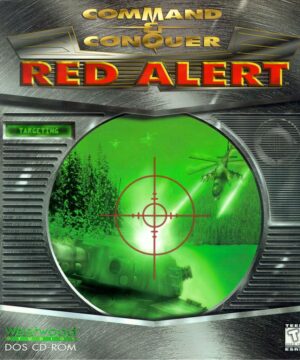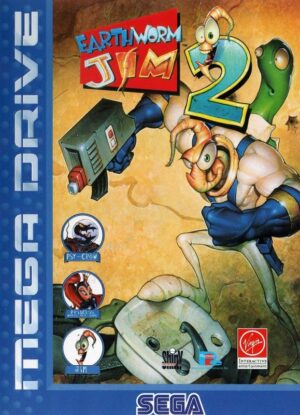Retro Replay Review
Gameplay
Necronomicon: The Gateway to Beyond weaves exploration, investigation, and occasional survival-horror elements into its core mechanics. Players guide William Stanton through dimly lit New England estates, fog-shrouded woods, and crumbling libraries, actively searching for clues to unravel the pyramid-shaped artifact’s secrets. Interaction with the environment is intuitive: items can be examined in detail, while notes and diary entries automatically populate Stanton’s journal, keeping track of critical leads.
(HEY YOU!! We hope you enjoy! We try not to run ads. So basically, this is a very expensive hobby running this site. Please consider joining us for updates, forums, and more. Network w/ us to make some cash or friends while retro gaming, and you can win some free retro games for posting. Okay, carry on 👍)
Combat is sparse but tense. When malevolent forces erupt from occult rituals gone awry, Stanton must rely on limited tools and quick reflexes rather than brute force. This scarcity of resources intensifies each encounter, forcing players to decide whether to stand their ground or flee into the shadows. Puzzle-solving remains the game’s centerpiece—ranging from cryptic cipher walls to mechanical contraptions that demand careful observation and logical deduction.
Character interaction is equally engaging. Conversations with secondary characters, including Edgar Wycherley himself, unlock new dialogue branches and hidden objectives. Dialog choices can influence access to certain locations or rituals, adding replayability and encouraging players to comb every corner of Stanton’s world. The balance between exploration, puzzle challenge, and brief combat sequences keeps the gameplay loop feeling fresh throughout its runtime.
Graphics
The visual design of Necronomicon: The Gateway to Beyond captures 1927 New England in haunting detail. Weathered wood, peeling wallpaper, and intricate period furnishings transport players into Stanton’s era. Dynamic lighting plays a crucial role—lanterns cast flickering shadows that can hide spectral threats, while moonlight slices through broken windows to reveal unsettling silhouettes.
Textures and environmental effects shine, particularly in outdoor sequences where swirling fog and rustling leaves create a palpable sense of foreboding. Interiors are richly decorated with occult symbols, dusty tomes, and the pyramid-shaped object itself glows with otherworldly light. Occasional particle effects—embers drifting from a dying fireplace or motes of dust dancing in a beam of light—enhance immersion.
Character models and animations are polished, with expressive facial features that convey Stanton’s growing dread. Cinematic camera angles heighten dramatic moments, such as when Edgar Wycherley’s guilt-ridden confession emerges in a flickering candlelit room. Although a few scenes exhibit low-resolution textures at maximum draw distance, these minor hiccups do little to diminish the game’s overarching Gothic atmosphere.
Story
Set against the backdrop of roaring twenties New England, Necronomicon’s narrative thrust begins in 1927 when William Stanton’s childhood friend Edgar Wycherley entrusts him with a strange, pyramid-shaped artifact. Edgar’s desperate plea—“Never show it to anyone, not even me if I ask”—sets off a chain of occult revelations that permeate every corner of Stanton’s world. This opening creates instant intrigue, anchoring players in a mystery that steadily unravels layer by layer.
As Stanton delves deeper into archives, clandestine society meetings, and cryptic personal letters, the stakes rise dramatically. Edgar’s hidden involvement in dark rituals not only endangers his own sanity but threatens to unleash horrors beyond mortal comprehension. Story pacing strikes a careful balance: there are quiet moments to reflect on newly discovered evidence and sudden bursts of tension when ancient evils stir awake.
Character development proves equally strong. William’s pragmatic skepticism gradually gives way to creeping paranoia, while Edgar’s transformation from trusted friend to reluctant harbinger of doom carries emotional weight. Supporting cast members, from local historians to reclusive occultists, each contribute unique perspectives and motives. This layered storytelling ensures players remain invested until the final ritual crescendo.
Overall Experience
Necronomicon: The Gateway to Beyond excels at weaving atmosphere, narrative, and challenge into a cohesive horror adventure. The game’s deliberate pacing allows tension to build steadily, so when supernatural elements finally emerge in full force, they feel earned rather than gimmicky. A thoughtfully designed user interface and responsive controls let players focus on immersion rather than fumbling with menu navigation.
Audio design further elevates the experience: an eerie score punctuates moments of discovery, while subtle ambient sounds—distant whispers, creaking floorboards, rustling curtains—keep players on edge. Voice performances are professional, conveying Stanton’s mounting dread and Edgar’s tortured guilt with convincing urgency. Occasional performance dips on older hardware are the only minor drawbacks in an otherwise polished presentation.
For fans of Lovecraftian horror and investigative gameplay, Necronomicon: The Gateway to Beyond offers a compelling journey into the occult underbelly of 1920s New England. Its blend of puzzles, exploration, and narrative depth makes it a standout title for players seeking a slow-burning, story-driven fright. Whether you’re drawn by its enigmatic pyramid, its period-perfect setting, or its suspenseful revelations, this game invites you to step through the gateway—and perhaps never return unchanged.
 Retro Replay Retro Replay gaming reviews, news, emulation, geek stuff and more!
Retro Replay Retro Replay gaming reviews, news, emulation, geek stuff and more!



Reviews
There are no reviews yet.